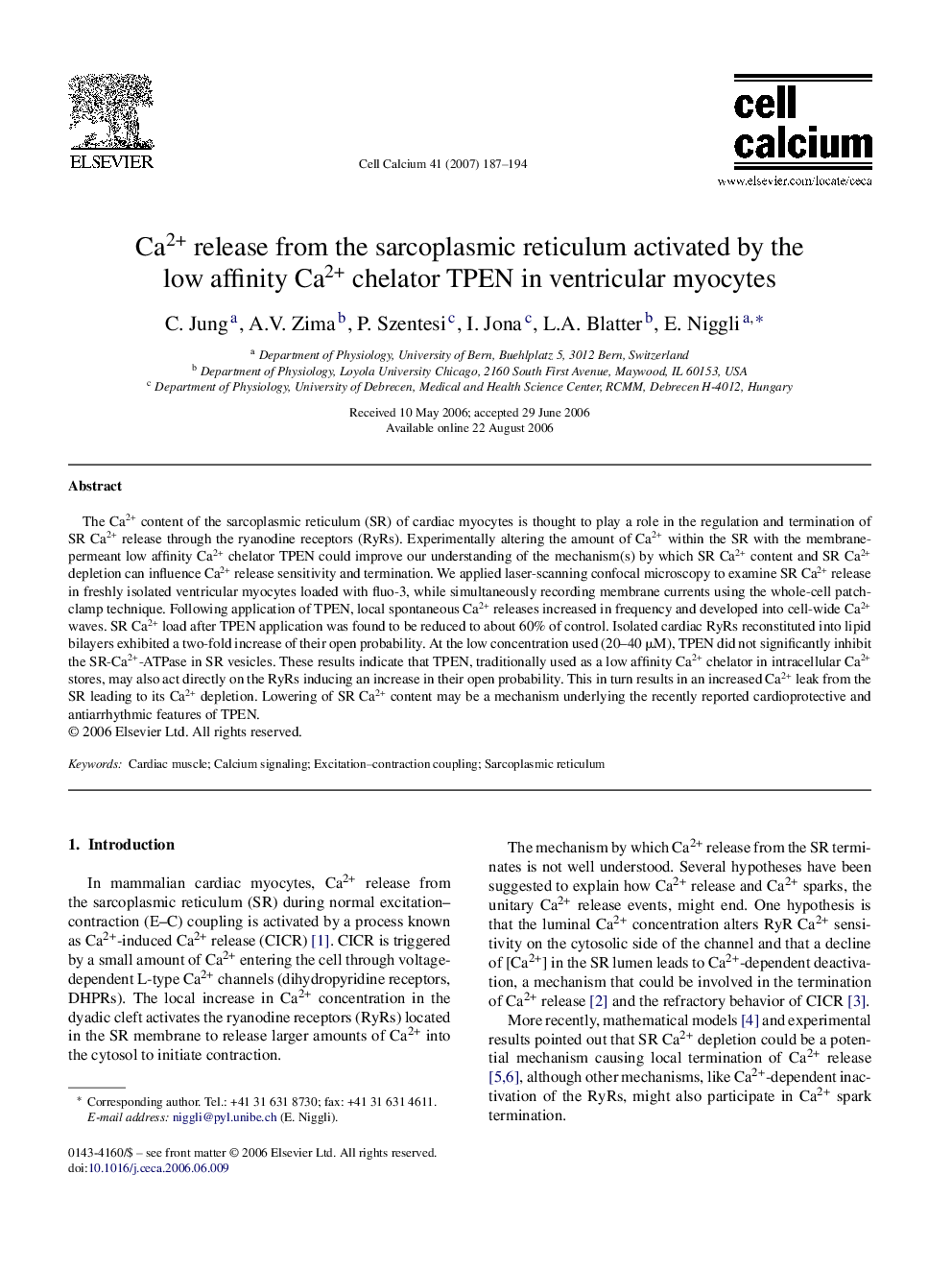| Article ID | Journal | Published Year | Pages | File Type |
|---|---|---|---|---|
| 2166640 | Cell Calcium | 2007 | 8 Pages |
Abstract
The Ca2+ content of the sarcoplasmic reticulum (SR) of cardiac myocytes is thought to play a role in the regulation and termination of SR Ca2+ release through the ryanodine receptors (RyRs). Experimentally altering the amount of Ca2+ within the SR with the membrane-permeant low affinity Ca2+ chelator TPEN could improve our understanding of the mechanism(s) by which SR Ca2+ content and SR Ca2+ depletion can influence Ca2+ release sensitivity and termination. We applied laser-scanning confocal microscopy to examine SR Ca2+ release in freshly isolated ventricular myocytes loaded with fluo-3, while simultaneously recording membrane currents using the whole-cell patch-clamp technique. Following application of TPEN, local spontaneous Ca2+ releases increased in frequency and developed into cell-wide Ca2+ waves. SR Ca2+ load after TPEN application was found to be reduced to about 60% of control. Isolated cardiac RyRs reconstituted into lipid bilayers exhibited a two-fold increase of their open probability. At the low concentration used (20-40 μM), TPEN did not significantly inhibit the SR-Ca2+-ATPase in SR vesicles. These results indicate that TPEN, traditionally used as a low affinity Ca2+ chelator in intracellular Ca2+ stores, may also act directly on the RyRs inducing an increase in their open probability. This in turn results in an increased Ca2+ leak from the SR leading to its Ca2+ depletion. Lowering of SR Ca2+ content may be a mechanism underlying the recently reported cardioprotective and antiarrhythmic features of TPEN.
Related Topics
Life Sciences
Biochemistry, Genetics and Molecular Biology
Cell Biology
Authors
C. Jung, A.V. Zima, P. Szentesi, I. Jona, L.A. Blatter, E. Niggli,
